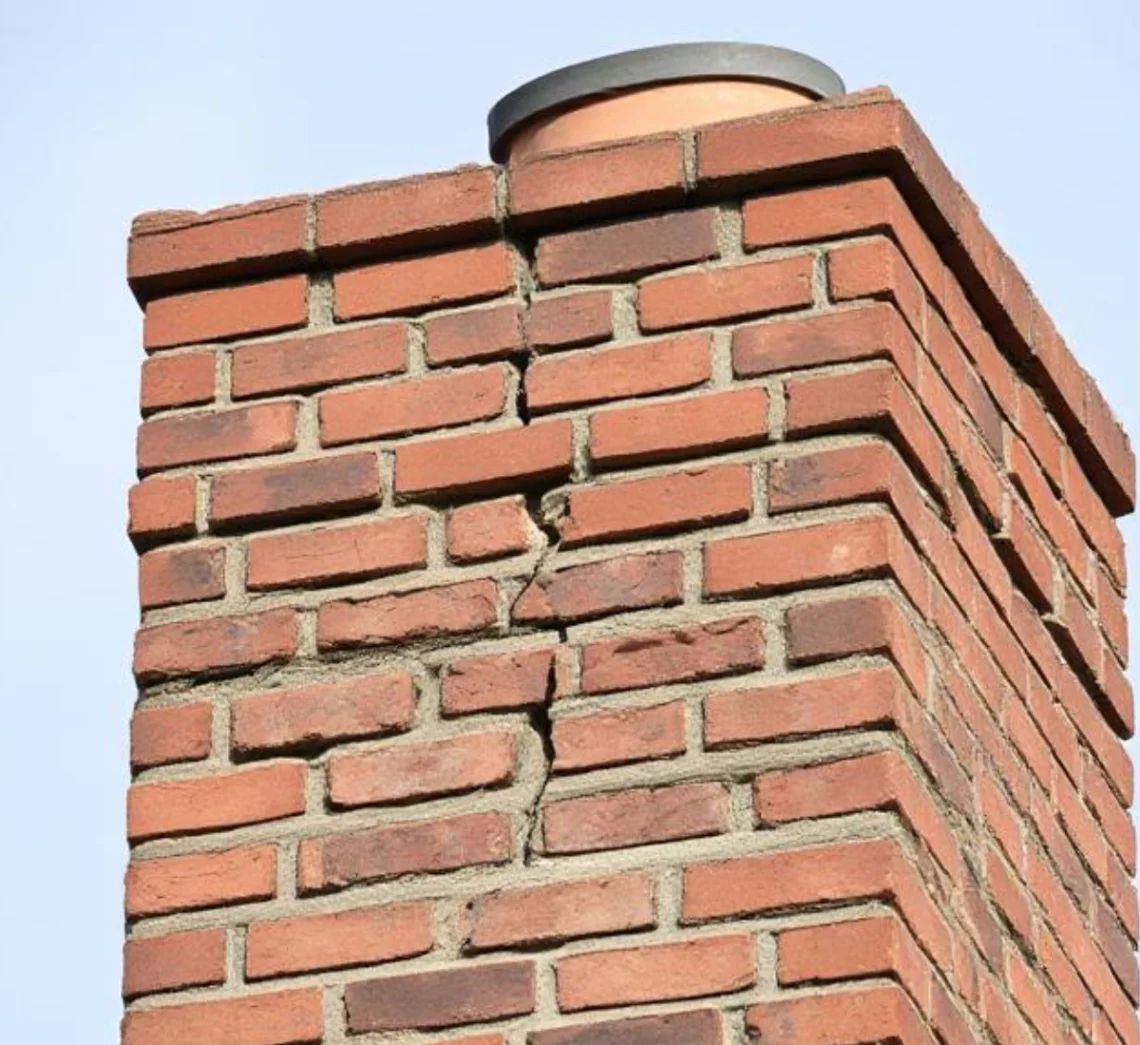
How to Repair a Cracked Brick Chimney?
Table of Contents
ToggleHow to Repair a Cracked Brick Chimney? Easy DIY Repair Guide & Pro Tips!
Your chimney is more than just a decorative element – it’s a critical component of your home’s structure and safety. Imagine your chimney as the lungs of your house, helping to ventilate heat and smoke while protecting your living space from potential fire hazards. Brick chimneys have been a staple of home design for centuries, providing both functionality and aesthetic appeal.
When you notice cracks in your chimney, it’s like spotting warning signs on a road trip. These imperfections aren’t just cosmetic issues – they can signal deeper problems that might compromise your home’s safety and structural integrity. Common signs of chimney damage include visible cracks, loose bricks, crumbling mortar, and areas where moisture seems to be penetrating the brick surface.
Some red flags to watch for include hairline cracks spreading across the brickwork, mortar joints that look worn or are falling out, and any visible leaning or separation of the chimney from your home’s structure. These symptoms suggest it’s time to take a closer look and potentially plan for repairs.
Types of Cracks in Brick Chimneys
Not all chimney cracks are created equal. Think of them like different types of injuries – some are minor scrapes, while others are serious wounds that require immediate attention. Superficial cracks are typically thin, hairline fractures that don’t penetrate deep into the brick or mortar. These might look concerning but often don’t indicate structural damage.
Structural cracks, on the other hand, are the real troublemakers. These wider, more pronounced fissures can signal serious issues with your chimney’s foundation or overall stability. They might result from significant ground settling, extreme temperature changes, or underlying structural problems that need professional evaluation.
The causes of these cracks are as varied as the weather. Water damage tops the list – freeze-thaw cycles can cause bricks to expand and contract, creating stress fractures. Foundation settling can cause uneven pressure, while thermal shock from rapid temperature changes can create unexpected stress points in your chimney’s structure.
Safety Measures Before Repairing
Working on a chimney isn’t like changing a light bulb – it’s a potentially dangerous task that requires careful preparation. Height is your primary enemy here. Chimneys are typically located on roofs, which means you’re dealing with significant fall risks that can lead to serious injury or worse.
Personal protective equipment is your first line of defense. You’ll need a robust set of safety gear, including non-slip work boots, safety glasses to protect from falling debris, heavy-duty work gloves, and a dust mask to prevent inhaling potentially harmful particles. If you’re working at height, a proper safety harness is absolutely essential.
Beyond personal protection, you’ll want to consider the structural safety of the chimney itself. Before attempting any repairs, carefully assess the overall condition. Look for signs of significant structural damage that might make DIY repairs dangerous or impossible. When in doubt, consult a professional.
Step by Step Guide for Repairing a Cracked Brick Chimney
Initial Comprehensive Chimney Inspection
Conduct a meticulous visual examination of your entire chimney structure, identifying every visible crack, chip, and potential structural weakness using professional-grade inspection techniques and precise measurement tools.
Advanced Damage Documentation
Systematically photograph and document each crack, measuring their width, length, and depth using specialized measuring tools to create a comprehensive repair map for targeted and effective restoration efforts.
Safety Equipment Preparation
Gather essential protective gear including high-quality safety goggles, respirator masks, thick leather work gloves, sturdy non-slip boots, and professional-grade scaffolding or ladder stabilization equipment for safe chimney access.
Surface Preparation and Cleaning
Use professional-grade wire brushes, specialized masonry cleaning tools, and compressed air to meticulously remove loose debris, old mortar fragments, and potential moisture-trapped materials from crack surfaces and surrounding brick areas.
Crack Assessment and Classification
Carefully categorize chimney cracks into specific types: hairline superficial cracks, structural foundation cracks, horizontal stress cracks, and vertical movement cracks to determine appropriate repair methodologies and potential underlying issues.
Precise Mortar Mix Preparation
Select high-quality masonry repair mortar matching original brick composition, carefully measure water-to-powder ratio, and mix thoroughly to achieve perfect consistency resembling thick peanut butter without excessive water or dry components.
Strategic Mortar Application Technique
Use professional pointing trowels to carefully fill identified cracks, applying mortar in controlled layers, ensuring complete penetration and smooth integration with existing brick surfaces without creating additional structural stress.
Final Waterproofing and Protection
Apply specialized masonry sealant across repaired areas, creating a moisture-resistant barrier that prevents future water penetration, protects against freeze-thaw damage, and extends the overall longevity of your chimney restoration project.
Additional Repair Points
- Carefully evaluate the depth and severity of cracks before beginning repairs
- Consider professional consultation for complex or extensive chimney damage
- Ensure proper weather conditions for optimal mortar setting and curing
- Monitor repaired areas periodically for potential future deterioration
- Understand local building codes and potential permit requirements
- Invest in high-quality repair materials for long-lasting results
- Maintain proper drainage around chimney base to prevent future moisture issues
- Schedule regular professional inspections to catch potential problems early
Pro Tips for Successful Chimney Repair
✓ Always prioritize safety during the repair process
✓ Take your time and work methodically
✓ Don’t rush the mortar mixing and application
✓ Use the right tools for precise repairs
✓ Invest in quality materials
✓ Consider professional help for complex repairs
✓ Document your repair process
✓ Follow manufacturer’s guidelines for all products
Warning Signs Requiring Immediate Professional Attention
⚠️ Large, continuously expanding cracks
⚠️ Visible structural misalignment
⚠️ Significant mortar deterioration
⚠️ Evidence of water penetration
⚠️ Chimney leaning or separating from house
⚠️ Multiple interconnected crack patterns
Recommended Tools for Chimney Repair
🛠️ Wire brush
🛠️ Pointing trowel
🛠️ Masonry chisel
🛠️ Safety hammer
🛠️ Measuring tape
🛠️ Level
🛠️ Protective safety gear
🛠️ Mortar mixing tools
By following these comprehensive guidelines, you’ll be well-equipped to tackle chimney repairs with confidence and precision, ensuring the long-term structural integrity of your home’s important architectural element.
Advantages of Professional Chimney Repair Services
While DIY repairs are cost effective, professional chimney repairs bring a level of expertise that goes far beyond simple patch jobs. These specialists undergo extensive training to identify subtle issues that might escape an untrained eye. They can spot potential problems before they become major repairs.
Professional services come equipped with specialized tools and high-quality materials that aren’t typically available to homeowners. Their diagnostic equipment can detect hidden issues like internal flue damage or structural weaknesses that you might never notice on your own. It’s like having a medical specialist examine your chimney’s health.
The long-term value becomes clear when you consider the potential cost of mistakes. A professional repair might seem more expensive upfront, but it can save you thousands in potential damage repairs. Most reputable services also offer warranties, giving you peace of mind that the repair is guaranteed to last.
DIY OR Professional Repair
Deciding between DIY and professional repair is like choosing between a home-cooked meal and a restaurant dinner. Small, cosmetic repairs might be within your skill set, but significant structural issues require professional intervention. Consider your own skill level, available time, and the complexity of the damage.
Cost is always a consideration, but it shouldn’t be the only factor. While DIY might seem cheaper initially, mistakes can lead to costly repairs down the line. Professional repairs might cost more upfront but often provide longer-lasting solutions and prevent additional damage to your home.
A good rule of thumb: If the crack is wider than a quarter-inch, involves multiple bricks, or shows signs of structural movement, it’s time to call a professional. Your safety and your home’s integrity are worth the investment of expert repair services.
Final Thoughts About How to Repair a Cracked Brick Chimney?
Chimney repair is more than just a home maintenance task – it’s about protecting your home and ensuring the safety of your living space. Those seemingly minor cracks can quickly become major issues if left unaddressed. Regular inspection and timely repairs are your best defense against potential damage.
Remember, your chimney is a critical component of your home’s structure and safety system. Whether you choose to tackle minor repairs yourself or call-in professionals, the most important step is taking action. Don’t wait for small issues to become costly, dangerous problems.
Stay proactive, stay safe, and give your chimney the care and attention it deserves. Your home will thank you for it.
FAQs: How to Repair a Cracked Brick Chimney?
Below are some of the FAQs about How to Repair a Cracked Brick Chimney?
How to fix vertical crack in chimney?
To allow for future movement without sacrificing the integrity of the repair, use a flexible sealer made especially for masonry applications. To guarantee correct adherence and long-lasting effects, make sure the area is clean and ready before applying the sealer or filler material.
Can a cracked chimney flue be repaired?
The best way to fix fractured flue tiles is to line or reline the chimney. Get in touch with a qualified expert right away if you are worried about the cracks in your flue tiles.
What causes cracks in a brick chimney?
Cracks in a brick chimney can be caused by weather exposure, moisture damage, settling of the house foundation, or thermal expansion due to extreme temperature changes.
How can I prevent my chimney from cracking in the future?
Regular inspections, sealing the bricks to prevent moisture absorption, installing a chimney cap, and addressing structural issues early can help prevent future cracks.
Is it safe to use my fireplace if my chimney has cracks?
Small surface cracks may not pose an immediate danger, but deeper cracks can lead to structural instability or allow smoke and dangerous gases to leak into your home. It’s best to have a professional inspect it before use.
You May Also Like

Top 10 best home decor stores in Seattle, Washington
24 December 2023
Top 10 best home decor stores in Toledo, Ohio
25 December 2023

